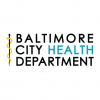Naloxone Access in Baltimore City
Naloxone, commonly known as Narcan, is a life-saving medication that reverses opioid overdoses. It is easy to use, and there are no side effects if used on someone who is not experiencing an overdose. Naloxone/Narcan is free of charge through our Overdose Response Program. It is also available over the counter and can be purchased at a pharmacy.
Accessing Naloxone in Baltimore City
Today, you can receive Narcan from any MDH-registered Overdose Response Program or Syringe Service Program. With the addition of the STOP Act enacted across Maryland, there are multiple ways to receive naloxone at no cost.
The Staying Alive Overdose Response Program
The Staying Alive Program is an Overdose Response Program (ORP) that provides overdose prevention education and dispenses naloxone to residents free of charge. Between 2015 and 2023, BCHD and its partners trained more than 155,000 Baltimore residents - and saved the lives of more than 18,000 people.
How to Use Naloxone
.png)
Non-Fatal Overdose Spike Response
The Non-Fatal Overdose Spike Alert and Response System was developed in partnership with the Baltimore City Fire Department (BCFD). A cluster is defined as a greater-than-expected number of overdoses happening within an area based on space and time. When such a cluster is detected, BCHD sends a spike alert to community-based organizations that have opted in. Street-based outreach teams are then dispatched to distribute naloxone in the affected areas.
EMS Naloxone Leave-Behind Program
The Naloxone Leave-Behind Program is a joint effort between the Maryland Department of Health and the Baltimore City Fire Department. It enables first responders to leave naloxone with patients and their support systems during overdose-related 911 calls in Baltimore City. This ensures that life-saving resources are available whether or not the patient chooses to go to the hospital. By distributing naloxone directly to those who are most likely to use it in emergencies, the program effectively targets those in need, even when the number of non-fatal overdoses in an area is not significant enough to trigger a spike response.
